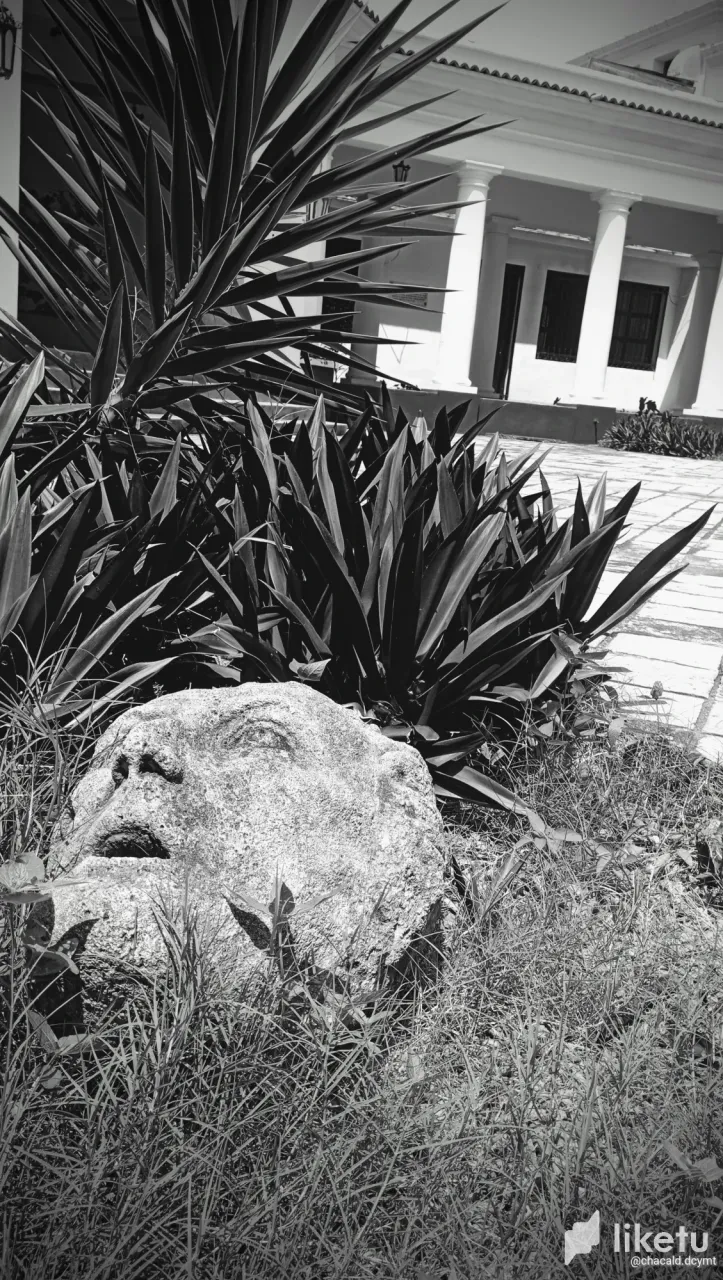
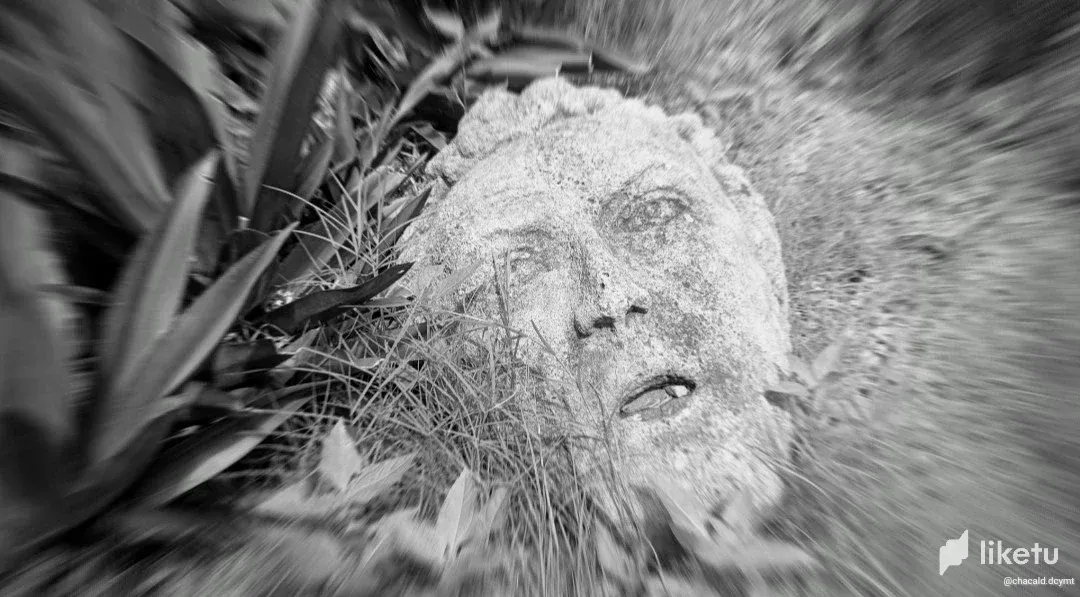
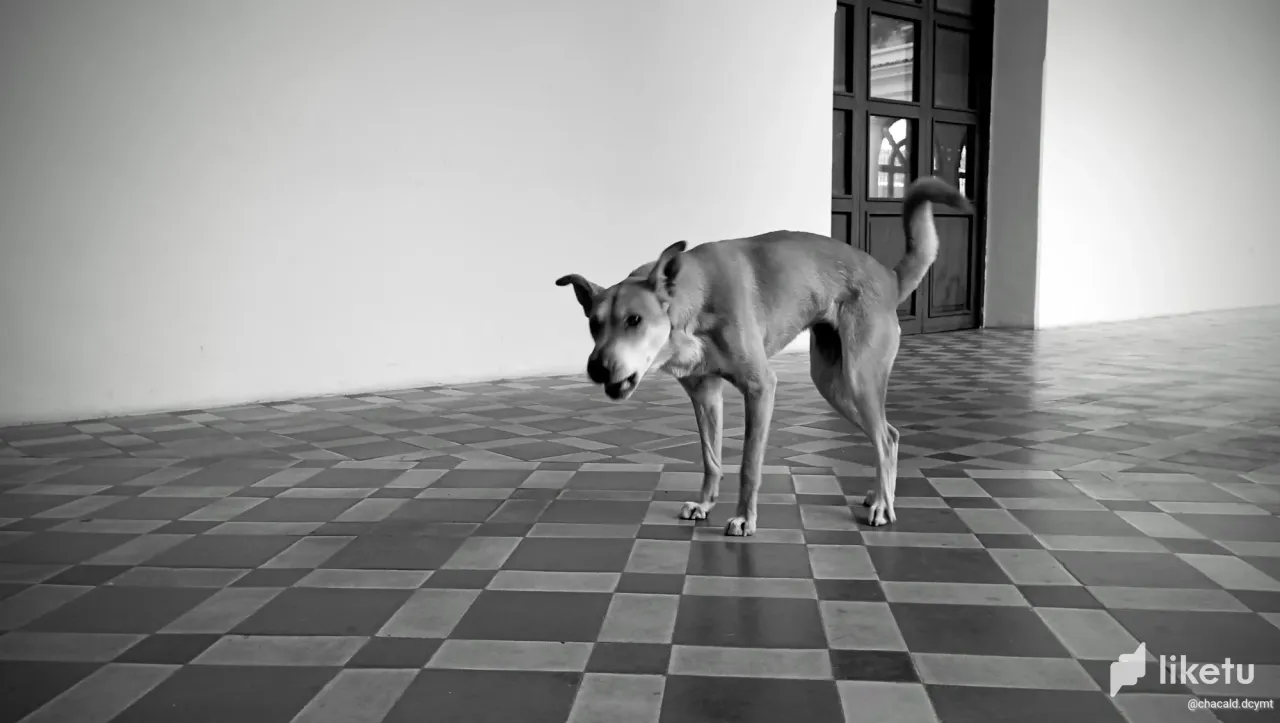
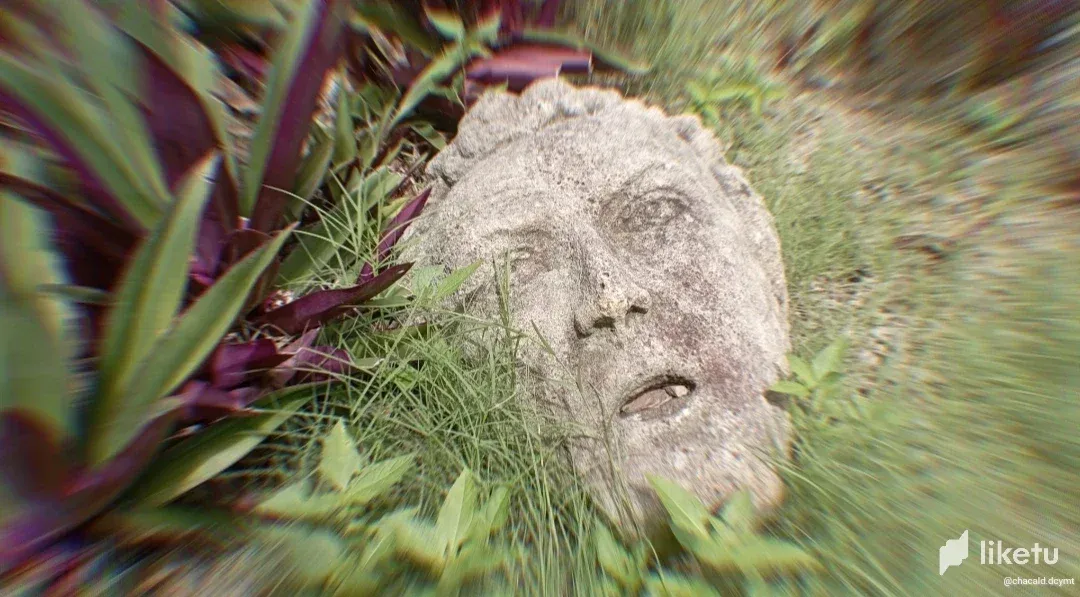
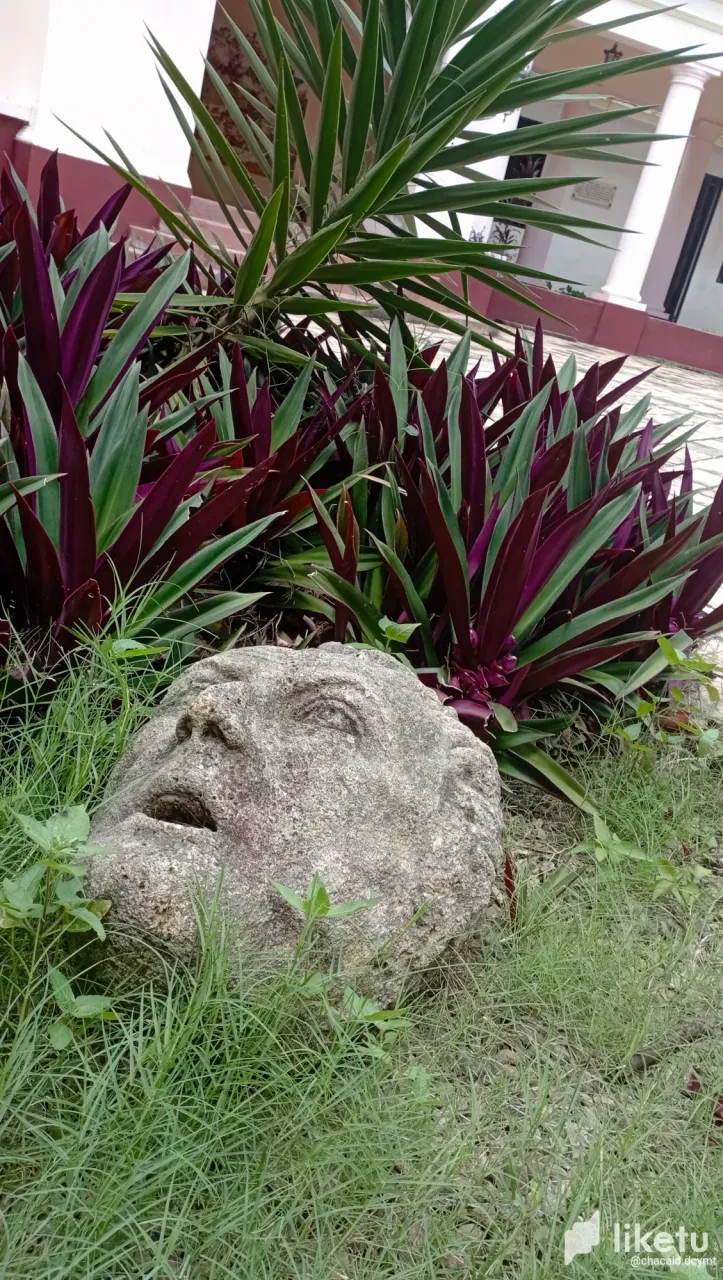
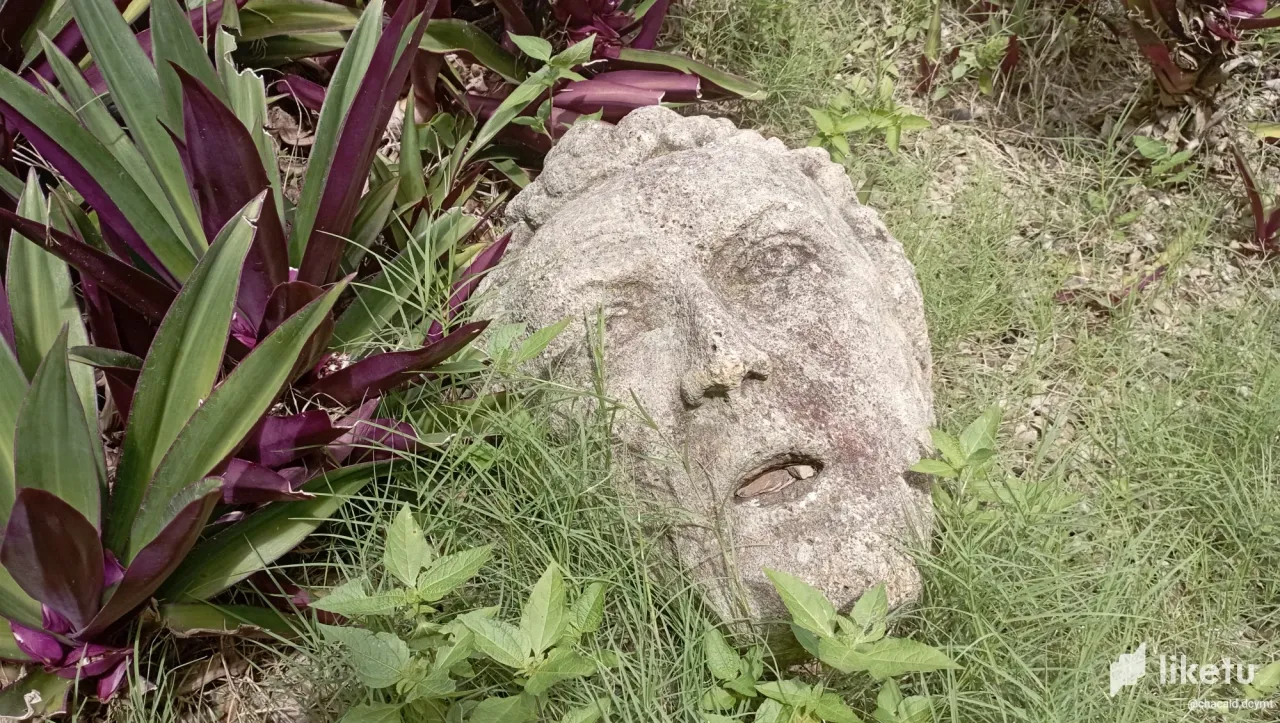
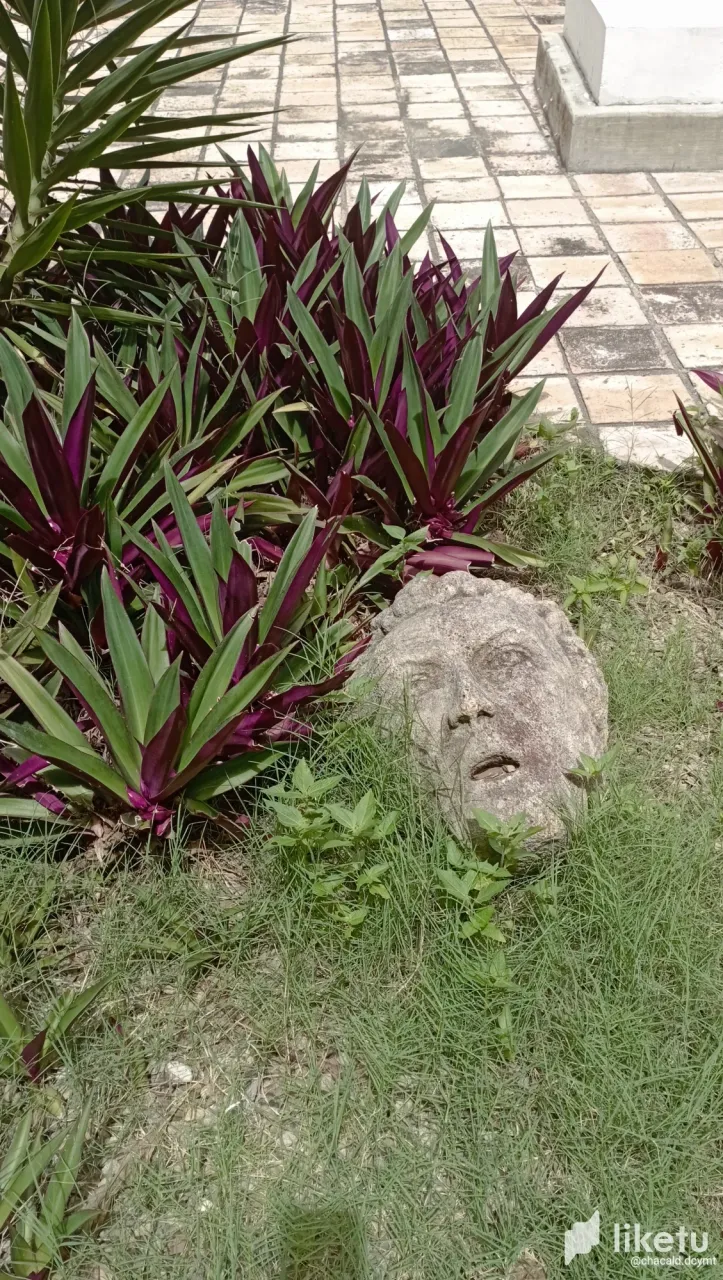
La cabeza terrorífico del centro del libro
Hace unos días estaba paseando por el centro de la ciudad y me acerqué al lugar donde hacen trueques de libros para preguntar por un libro de ajedrez que estoy buscando y me encontré que estaba todo cerrado.
Al cruzar por el patio, había un perro grande color caramelo, parecía enojado. Entonces decidí cruzar por el jardín y fue cuando vi, entre las plantas violetas y el césped verde una cabeza.
Juro por Dios que si un paso atrás con sobresalto. La expresión del rostro de aquella cabeza de piedra era espeluznante.
Me detuve y pude ver que esa cabeza tenía buen tiempo en ese jardín, porque las plantas estaban enraizadas en la piedra.
No sé si se trata de una escultura que fue hecha de esta manera para representar algo en especial o fue que alguna de las esculturas de la plaza fue decapitada y la cabeza terminó aquí. Fue cuando se me ocurrió la historia.
El decapitado del centro del libro
Hace más de un siglo el monasterio fue instituido en el centro de la ciudad. Los monjes eran los que dirigían a toda la sociedad y eran muy estrictos.
Para todo tenía reglas y procedimientos. No les gustaba que se les llevara la contraria y mucho menos que las cosas se les salieran de control.
José, el monje novato quería expresar su arte. Para esa epoca el pintar sobre una pared colores brillantes con un mensaje motivacional era considerado como rebeldía.
José era un muchacho con toda una vida por delante. No perdía la oportunidad de hacer hermosas obras de arte con las cascaras de las verduras, cuando le tocaba el área de la cocina. Con la ropa sucia, cuando estaba en la lavandería y hasta con las cuentas que se utilizaban para la oración mientras meditaba.
Los monjes superiores estaban muy molestos por el comportamiento de José. Para ellos estas cosas eran una perdida de tiempo. José fue castigado cruelmente con un látigo después que colgó una sábana blanca con un hermoso paisaje hecho con salsa de tomate que decía "expresa siempre lo que llevas dentro".
José sintió que debía hacer caso a los mojes ancianos, no volvería a pasar por ese dolor del látigo cortando su piel, así que esa noche corrió al jardín y en un hueco profundo enterró sus pinceles y pinturas.
La vida continúo normal. Los monjes se felicitaban entre ellos por el gran trabajo que habían he ho con el rebelde, esto demostraba que el castigo físico era la solución para encaminar a los descarrilados.
En el fondo José seguía pintando, en su imaginación hacia dibujos y cuando tenía una gran necesidad de expresarse, corría a la playa y dibujaba sobre la arena. Sabía que el mar se encargaría de borrar sus pecados, como decían los monjes.
Así pasaron los años y los monjes tomaron poder. Tanto que crearon una ley donde obligaban a todos en la ciudad a borrar cualquier expresión artística.
José sintió que se moría. No podía permitir que esto pasara. Las personas comenzaron a entregar sus pinturas y los monjes las guardaban en un depósito para luego hacer una gran fogata y quemar todo.
Esa noche, José decidió actuar y robo todos los pinceles y las pinturas. Sigilosamente fue por la noche a la pared de la basílica de la ciudad y pintó un hermoso mural colorido y con el mensaje de siempre que era su firma: "expresa lo que llevas dentro".
Los monjes enloquecieron por el desacato a la autoridad y lo mandaron a decapitar. Antes de morir, las últimas palabras de José fueron dedicadas a la ciudad pidiéndoles que no se rindieran. Su cabeza rodó por el patio central del monasterio.
2 siglos después, el edificio se convirtió en el centro del libros. Paradójicamente es el lugar donde se exponen hermosas obras de arte.
Una tarde, de la nada, apareció en el jardín central, el mismo lugar donde decapitaron al monje José, una cabeza de piedra. De alguna forma el monje regresó para estar cerca de las bellas artes que tanto alegraban su vida.

The terrifying head in the center of the book
A few days ago I was walking around downtown and I approached the place where they barter books to ask for a chess book that I am looking for and I found that everything was closed.
As I crossed through the yard, there was a big, caramel colored dog, he looked angry. Then I decided to cross through the garden and that's when I saw, among the purple plants and green grass, a head.
I swear to God, I stepped back with a start. The expression on the face of that stone head was creepy.
I stopped and I could see that this head had been in that garden for a long time, because the plants were rooted in the stone.
I don't know if it was a sculpture that was made this way to represent something special or if one of the sculptures in the plaza was decapitated and the head ended up here. That's when the story occurred to me.
The beheaded man in the center of the book
More than a century ago the monastery was instituted in the center of the city. The monks were the ones who ran the whole society and they were very strict.
For everything they had rules and procedures. They did not like to be contradicted, much less to have things get out of control.
Joseph, the novice monk, wanted to express his art. At the time, painting bright colors with a motivational message on a wall was considered rebelliousness.
Joseph was a boy with his whole life ahead of him. He never missed an opportunity to make beautiful works of art with vegetable peels when it was his turn in the kitchen area. With the dirty clothes, when he was in the laundry and even with the beads that were used for prayer while meditating.
The senior monks were very upset by Joseph's behavior. To them these things were a waste of time. Joseph was cruelly punished with a whip after he hung up a white sheet with a beautiful landscape made of tomato sauce that read "always express what is inside you."
Jose felt he had to listen to the old men, he would not go through the pain of the whip cutting into his skin again, so that night he ran to the garden and buried his brushes and paints in a deep hole.
Life went on as normal. The monks congratulated each other for the great job he had done with the rebel, proving that physical punishment was the solution to bring the derailed ones back on track.
Deep down, Joseph continued to paint, in his imagination, he drew pictures and when he had a great need to express himself, he would run to the beach and draw on the sand. He knew that the sea would take care of erasing his sins, as the monks used to say.
And so the years passed and the monks took power. So much so that they created a law forcing everyone in the city to erase any artistic expression.
Joseph felt he was dying. He could not allow this to happen. People began to hand in their paintings and the monks would store them in a warehouse and then make a big bonfire and burn everything.
That night, Joseph decided to act and stole all the brushes and paints. Stealthily, he went at night to the wall of the city's basilica and painted a beautiful colorful mural with his signature message: "express what is inside you ".
The monks were maddened by his contempt for authority and had him beheaded. Before dying, Joseph's last words were dedicated to the city, asking them not to surrender. His head rolled into the central courtyard of the monastery.
Two centuries later, the building became the center of the book. Paradoxically, it is the place where beautiful works of art are exhibited.
One afternoon, out of nowhere, a stone head appeared in the central garden, the same place where the monk Joseph was beheaded. Somehow the monk returned to be close to the fine arts that made his life so happy.

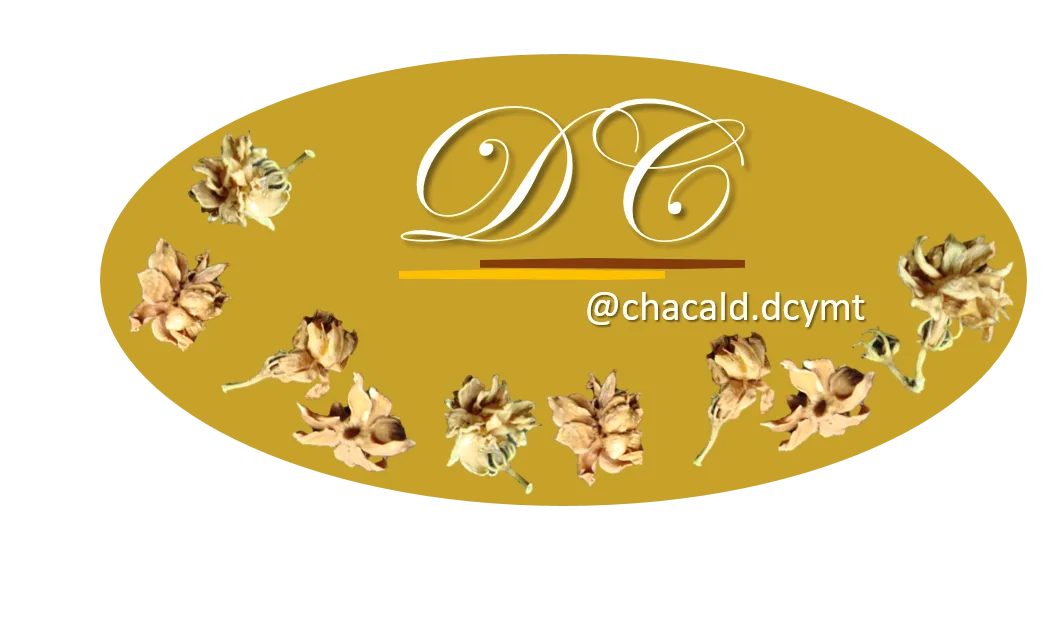
Original content by the author.
Resources: App: Canva / Giphy / Inshot
📷 Redmi 10 Smartphone
Translation done with Deepl.com
✿ All Rights Reserved || © @chacald.dcymt 2023 ✿
💌 Discord: chacald.dcymt#3549
Twitter @chacald1
_
Contenido original del autor.
Recursos: App: Canva / Giphy / Inshot
📷 Redmi 10 Smartphone
Traducido con Deepl.com
✿ Todos los Derechos Reservados || © @chacald.dcymt 2023 ✿
💌 Discord: chacald.dcymt#3549
Twitter @chacald1
